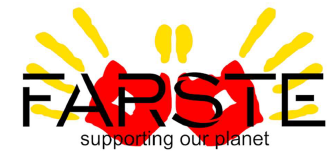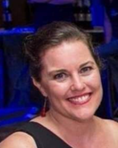
As a Proud Indigenous owned business Farste acknowledges the Traditional Custodians of Country and their connections to land, sea, and community.
We pay our respect to Elders past, present and emerging, and express gratitude for the creative energy our Indigenous Ancestry brings to our efforts.

Farste’s Mission is to accelerate the world’s transition away from fossil fuels,
underwrite an Australian manufacturing resurgence,
and provide a Science, Technology, Art and Math (STEAM) career path for Indigenous Australians.
We strongly believe our Indigenous Ancestry powers the creative energy that has led to the design of the Farste Drive, Contra Rotating Vertical Axis Wind Turbine and Charn’Daw Drone. Which is why we’re including Creative Art in our STEAM career path for Indigenous Australians.
Our Ancestors created simple, elegant solutions that were made from materials close at hand. Many reveal a deep understanding of science and medicine.
The boomerang was a purely Aboriginal invention. The angled shape with asymmetrical curves makes use of one of the most complicated principles of aerodynamics: asymmetrical lift.
The woomera is another uniquely Aboriginal invention that uses leverage to allow a spear to be thrown up to three times further. Witnesses report seeing spears thrown with enough force to skewer the trunk of a full-grown eucalyptus tree! Typically, the woomera was made by shaping a piece of hardwood into a long, thin handle and attaching a stone to the base to hold a spear-end in place.
Thermoplastic resins made from porcupine grass and grass trees. where the resin beaten out of the grass, then cleaned it and heated it over fire to create a sticky black substance. The resulting resin hardened as it cooled and was strong enough to bind rock to wood. This resin was used to create tools such as spears, woomeras and axes.
Weirs and fish traps demonstrated a sophisticated understanding of engineering, physics and aquaculture in the design of elaborate stone fish traps and are thought to be up to 40,000 years old. They may be some of the oldest surviving human-made structures in the world.
Firestick farming made and actively maintained fields through a form of controlled burning. Aboriginal firestick farming was incredibly precise. Fires can be aimed in a specific direction to clear tracks through the bush or create open parklands. Firestick farming flushed out animals that could be killed immediately for food. New grasses grew in the burned off areas, creating ideal conditions for game animals such as wallabies, and encouraging low-growing food plants to grow. It is thought that low intensity burning is necessary to prevent more serious fires in Australia.
Water bags known as the Coolgardie Safe, which used capillary action and evaporative cooling to keep food from spoiling, was the ‘household fridge’ of Australia from the 1890s until the mid-twentieth century. Inspired by watching Aboriginal people carry water in special bags made of wallaby skin, which used the same principles of heat transfer to keep the water cool.
Stone and natural glass tools were highly sophisticated in their range and uses. Stone and natural glass were fashioned into chisels, saws, knifes, axes and spearheads. Stone tools were used for hunting, carrying food, for making ochre, nets, clothing, baskets and more. Aboriginal people are thought to be one of the first to use stone tools to grind seeds, and the first to create ground edges on stone tools. They could grind a precision edge from stone that was as sharp as any metal blade.
The didgeridoo traditionally played by men in ceremony, is a purely Aboriginal invention and is thought to be the world’s oldest wind instrument. The didgeridoo is deceptively simple in design but is, in fact, a complicated instrument. A termite-hollowed didgeridoo tends to be wider in diameter at the bottom than the top, which creates unusual resonant frequencies. The vocalisations and circular breathing technique required to play it initiate sound wave interactions between the players’ lips and vocal tract, and within the instrument itself.
Aboriginal people invented countless ways to yield food and bush medicine from Australia’s landscape. They fished, hunted, rendered poisonous seeds edible, turned certain moths and grubs into delicious meals, made sweet drinks from native honey and nectar, ground grass seeds to bake an early form of damper. They used tannins to treat inflammation and alkaloids to relieve pain; extracted antiseptics such as tea tree oil to cure infections; and harvested latex to treat ulcers and skin conditions.
Aboriginal adults made toys such as rattles, dolls, spinning tops, and balls for their children to play with, as well as small-scale, harmless models of tools and weapons. Children made toy propellers out of strips of long leaves, which they launched into the air in throwing competitions.
North Queensland Aboriginal men played a game using spinning tops made from a rainforest gourd, beeswax, bark fibre and hardwood. It’s likely that skill at construction as well as spinning was a source of rivalry in these competitions.
For over 50,000 years we lived in harmony with and were the custodians of this great land, which is in direct contrast to the degradation inflicted since 1788.
Farste’s plan is to assist our People and Country regain their health.
Source thanks to https://www.australiangeographic.com.au/

Chris Moore, Founder, Managing Director and Head of Design
Laws and Economics, University of Tasmania
Engineering, Cairns TAFE
Extensive management, engineering, procurement, and construction experience in manufacturing and extractive industries throughout Australia and Asia. Designed, built and drove Sprintcars.
Proud ancestor of the Darug and Palawa Nations, and an Indigenous member of Willum Warrain Aboriginal Association.

Natalie Moore, CEO and Head of Training and Indigenous Participation
Commerce, Griffith University
Education, Monash University
Extensive education and management experience in Australia and Asia